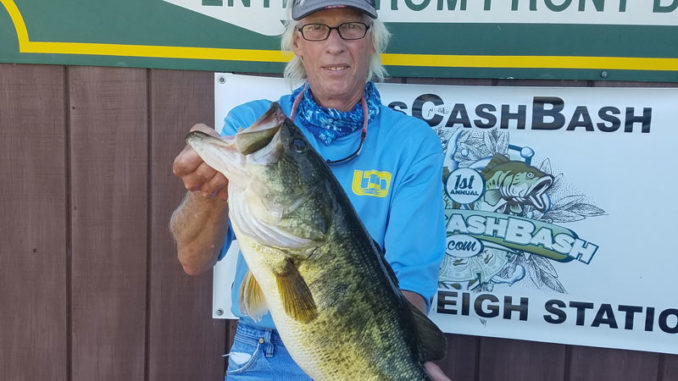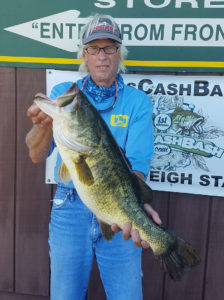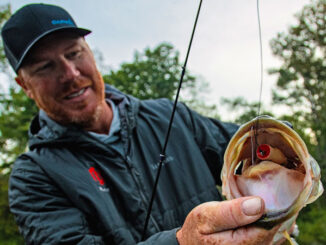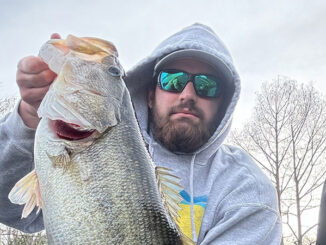
Summer bass fishing this year, at least the beginning of it, may include rewarding casts in the flooded bushes before the water drops out at Toledo Bend.
Summer hasn’t entered in all its blazing hot glory yet, but it’s knocking at the door. When it stays hot and the water’s lower, patterns will change.
Toledo Bend’s level was just above 172 feet at the end of May, with plenty of rain falling in the region. I predicted correctly last month that the water would be in the bushes, and it is. Baitfish, including shad and bream, are in that flooded vegetation, and bass will be, too, until the baitfish leave and/or the water temperature warms too much. And of course, they’ll leave if the water level drops.
I love this high-water stuff, and I’m not alone, because there are others who enjoy picking off bass in and around the bushes, where there’s plenty of room for bass to roam and feed. Some of the best high-water bassing has been up north. We don’t know how long it will last, but we’ll be there until it fizzles out.
Once that happens, anglers have a choice to either fish shallow for the first hour or two or the day, concentrate on lily pads in 2½- to 6-foot depths, or probe the depths in the 20- to 22-foot range with the aid of marine electronics.
My choice will be the lily pads, first and foremost. Thank goodness there are large patches growing. Most pads are 5 to 6 inches in diameter, but they’ll get bigger, up to 13 to 14 inches, and baitfish, particularly bream, get in them. Bass, big bass — 4- to 6-pounders — live in those lily pads, under the shade, dining.
Baits
Stanley Top Toads and Carolina-rigged soft plastics, junebug/red, redbug and cotton candy-colored Flukes will trigger the bass bite in pads. Also try weedless spoons, like the old Johnson Silver Minnow.

I throw a Carolina-rigged soft plastic on a 2½-foot leader under a ½-ounce weight on 40-pound Power Pro braid in the pads. As soon as I set the hook I strong-arm the fish to turn its head and get it coming to me. Otherwise, bass will wrap up the line in the lily pad stems, and you can kiss them goodbye.
Another choice for mid-summer bassing is to spend the first few and last few hours of the day in the shallows, fishing with a bladed jig — my pick is a Delta Lures Thunder Jig — plastic worms, a Senko, Stanley Ribbit or Stanley Top Toad plastic frogs, your favorite topwater (buzzbait, Chug Bug or Zara Spook), chrome Rat-L-Traps and, as it gets warmer and warmer, punching soft plastics.
There will be plenty of bass in deep water, where they can be caught on Carolina-rigged soft plastics, drop-shots, big shad-colored crankbaits and football-head jigs. Some fish are already out, but as I know too darned well, they bite when they want to after you pinpoint their location with marine electronics.
Schooling action
Another traditional summer pattern might be the most exciting of all. Hopefully, the schooling action kicks in early and lasts through the hot months. Most of it happens over drains and ditches in 20- to 25-foot depths where balls of shad hang out and the bass zero in on them, push them to the surface and start smashing them in a feeding frenzy. Have a topwater or your favorite schooling bass bait handy.
Crappie fishing is good and getting better and better. In fact, it’s through the roof right now over brush piles in 22- to 25-foot depths and should stay that way all the way into the summer. Then, when it’s hot, the night fishing takes over. Shiners and artificial jigs are getting mauled.


